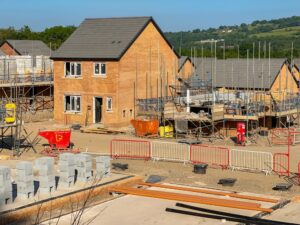As many as 4 million homes could be constructed on green belt land under Labour’s proposed planning reforms, according to analysis from property data firm LandTech.
The Housing Secretary, Angela Rayner, is pushing for a radical overhaul of the National Planning Policy Framework (NPPF), which could release significant amounts of green belt land for housing development, especially across London and the South East.
Ms Rayner’s vision to unlock “grey belt” land—previously considered unsuitable for development—forms part of Labour’s pledge to build 1.5 million homes within five years. However, recent findings suggest the scope of the reforms may far exceed expectations, potentially opening up 150,000 hectares of land for up to 4 million new homes.
LandTech’s analysis found that areas such as East Surrey and Orpington could see significant growth, with 115,000 and 89,000 new homes respectively. The North West, with the largest share of potential grey belt land, could accommodate as many as 801,000 new homes. Meanwhile, London and the South East have capacity for 275,000 and 523,000 homes on green belt land.
Harry Quartermain, head of research at LandTech, remarked, “It’s radical because they have made it clear that there are circumstances in which development on the green belt is no longer inappropriate.” He highlighted Labour’s redefinition of grey belt land, which includes not only previously developed sites but also land that contributes minimally to green belt objectives, such as preventing urban sprawl.
Labour’s reforms are designed to encourage sustainable development, with local authorities able to consider green belt development if they cannot meet housing targets with their current land pipelines.
While the property sector has warned that Labour’s goal of building 1.5 million homes within five years may be overly ambitious, these changes aim to lay the groundwork for long-term growth well beyond this parliamentary term. Simon Coop, senior director at Lichfield planning consultants, said, “The housing crisis will not be fixed in five years, it needs a long-term strategy.”
A spokesman for the Ministry of Housing, Communities and Local Government responded: “We remain committed to the protection of the Green Belt… development will only be allowed where there is a real need and will not come at the expense of the environment.”
With green belt reform at the heart of Labour’s housing strategy, the potential impact on both urban expansion and rural landscapes is likely to spark ongoing debate.
Read more:
Up to 4 million homes could be built on green belt under Rayner’s planning overhaul















